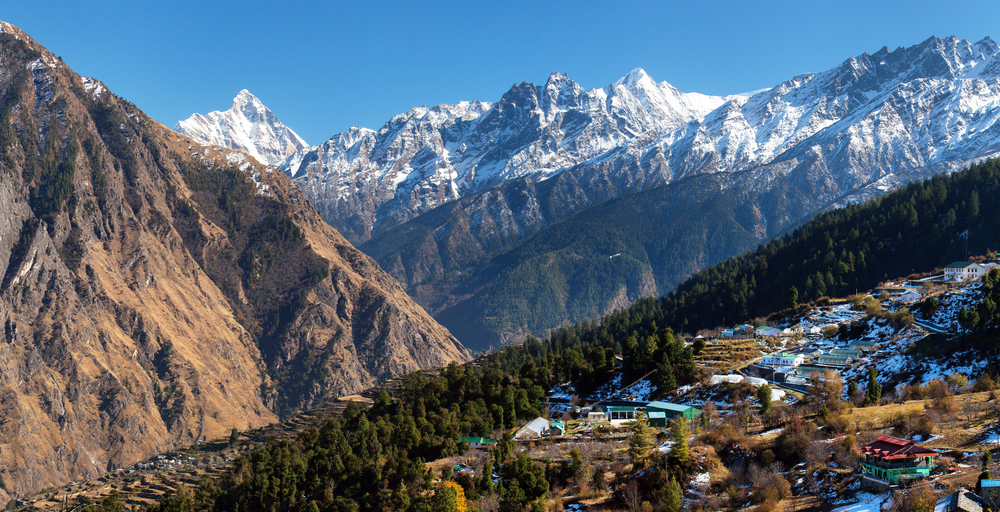Nanda Devi Overview
Nanda Devi National Park, known locally as Nanda Devi Rashtriya Udyan, is a UNESCO World Heritage Site located in the state of Uttarakhand, India. Spanning an area of approximately 240 square miles (624.6 square kilometers), the park is nestled within the Garhwal Himalayas and forms part of the larger Nanda Devi Biosphere Reserve. The park is named after the towering Nanda Devi, India’s second-highest peak at 25,643 feet (7,816 meters). Its remote location and rugged terrain make it a pristine and captivating natural wonder.
The park’s landscape is defined by dramatic contrasts. Steep cliffs, glacial moraines, and narrow valleys shape the rugged terrain, while expansive alpine meadows bring a softness to the scenery during the warmer months. Key features include the Rishi Ganga Gorge, one of the deepest in the world, and several glaciers, such as the Uttari Rishi Glacier. These features are complemented by a diverse array of vegetation, with forests of birch, fir, and rhododendron dominating the lower elevations, and alpine shrubs and wildflowers flourishing at higher altitudes. The monsoon season brings vibrant bursts of color, making the region particularly enchanting.
The park is home to a remarkable range of wildlife, adapted to its high-altitude environment. Among the mammal species, the elusive snow leopard and the Himalayan musk deer are the most iconic. Other animals such as the bharal (blue sheep), Himalayan black bear, and serow also inhabit the area. Birdwatchers can delight in spotting species like the Himalayan monal, the state bird of Uttarakhand, as well as the tragopan, snow partridge, and golden eagle. The biodiversity reflects the unique ecosystems present within this protected area.
Visitors are drawn to Nanda Devi National Park for its breathtaking natural beauty and the sense of seclusion it offers. The park’s restricted access has helped preserve its pristine condition. Trekking is the primary way to experience the park, with the Nanda Devi Trek being the most popular route. This challenging trail offers panoramic views of snow-capped peaks, glaciers, and valleys, and is a journey into one of the world’s most untouched wilderness areas. Nearby, the Valley of Flowers National Park, another UNESCO site, adds to the region’s allure with its extraordinary display of wildflowers.
Conservation efforts at Nanda Devi National Park have seen both challenges and successes. The area was closed to visitors in 1983 due to environmental degradation caused by increased trekking activity. Since reopening under strict regulations, the park has achieved significant recovery, showcasing the benefits of careful management. Continued threats, such as climate change and pressure from nearby human settlements, remain areas of concern. However, ongoing efforts by the Indian government and local communities have helped preserve the delicate balance of this fragile ecosystem.










































































